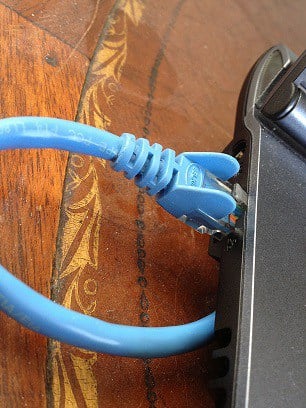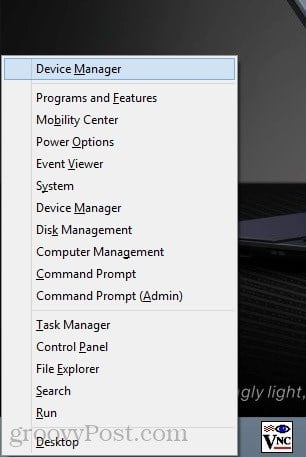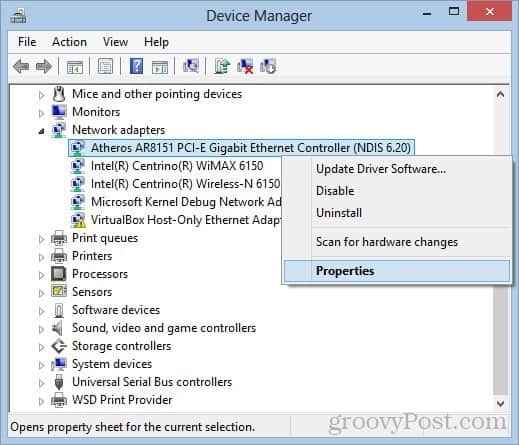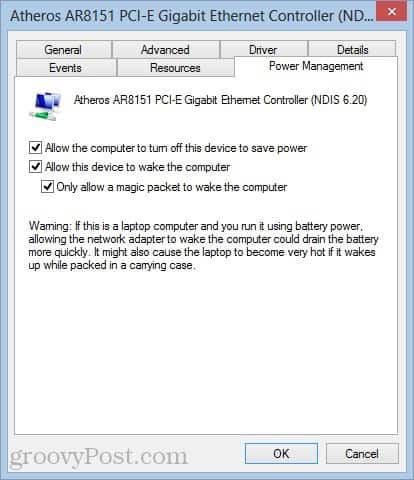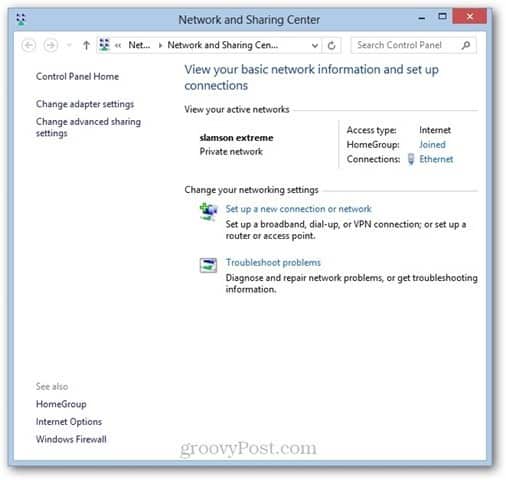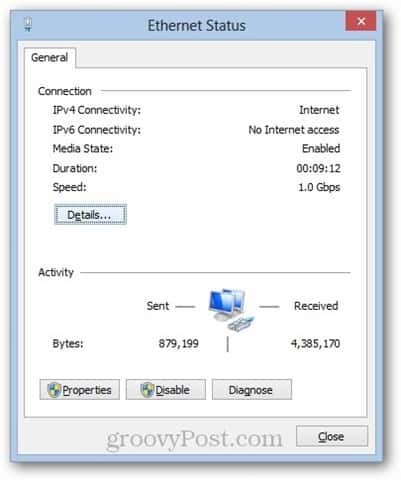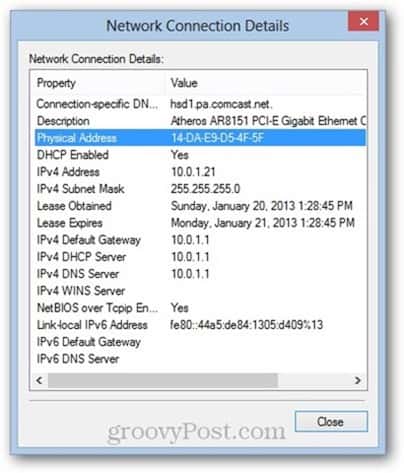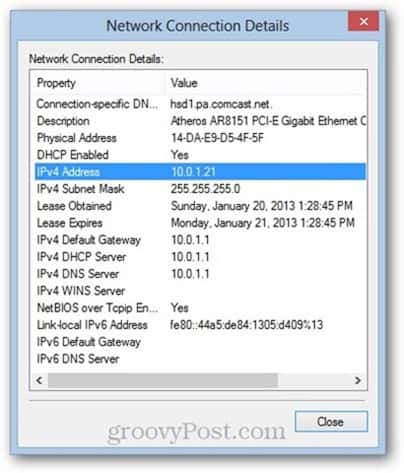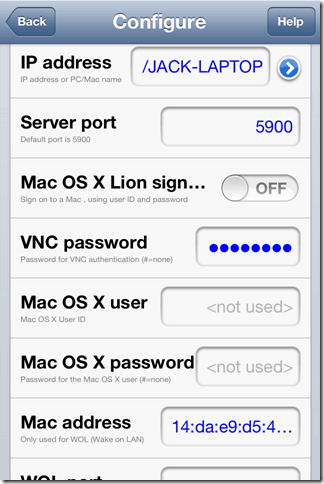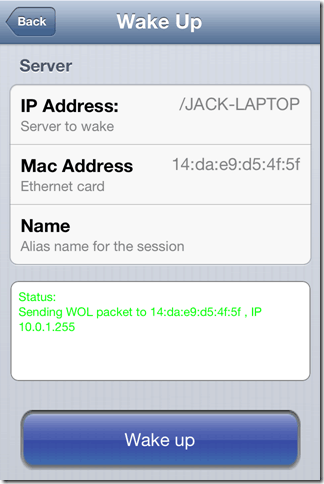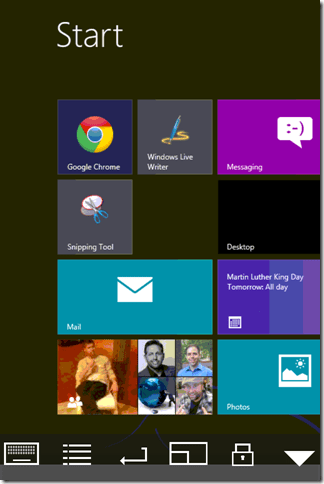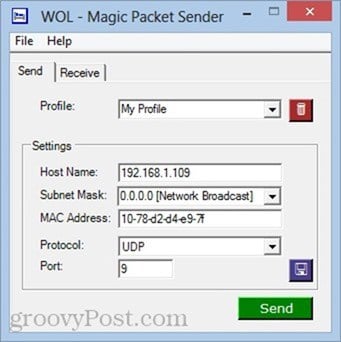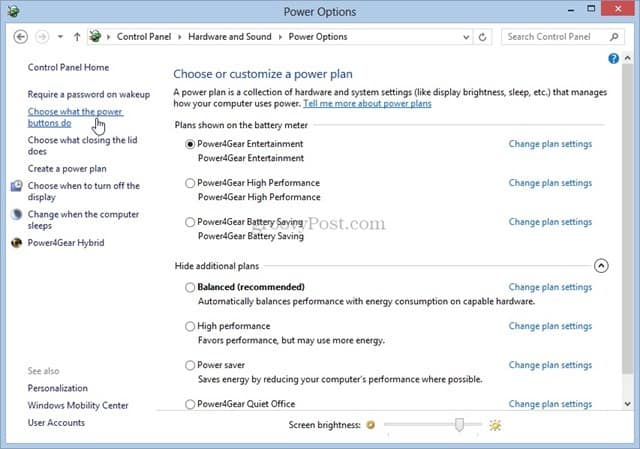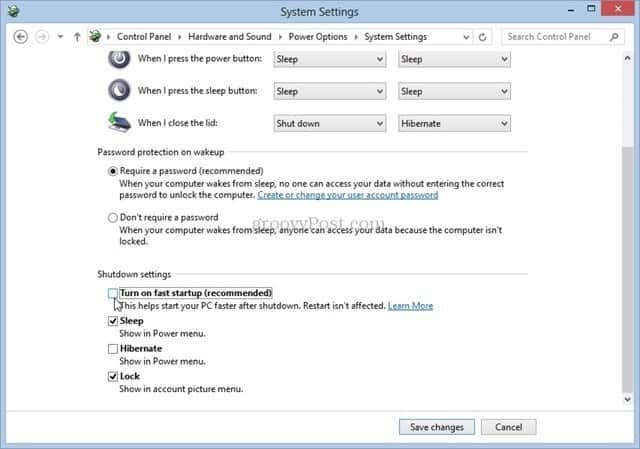Over the years, I’ve accumulated a number of computers, mobile devices and streaming boxes in my household. But I still like to keep my photos, music, movies and documents centralized on my main computer. Thanks to Windows HomeGroup sharing and iTunes Home Sharing, I don’t have to walk all the way up to my office every time I want to access those files. However, I do have to ensure that my main computer is powered on. Now, I could leave my PC on 24/7, or even schedule my computer to sleep and wake automatically at a certain time of day. But the method that’s easiest on my electricity bill is to only turn my computer on when I need it. Thanks to wake-on-LAN, I can do that without getting up off the couch. The wake-on-LAN (WOL) protocol has long been used in IT settings to remotely manage computers, and it’s just as handy at home. With wake-on-LAN enabled, your computer will “listen” for a “magic packet” containing its MAC address while it is in sleep mode. The computer can be woken up by sending it a magic packet from another device on the network. There are some caveats to this: First, wake-on-LAN only works with a wired Ethernet connection. There is such a thing as “wake on wireless LAN” (WoWLAN) but it’s much more complicated, and depending on your hardware, perhaps not even possible. Secondly, wake-on-LAN typically only works on your local area network. There are ways to configure wake-on-LAN to work via a magic packet sent from outside your home network via the Internet, but there are additional security considerations to factor in. That all being said, WOL can be very useful for a house with many computers. Read on to learn how to set it up in Windows 8.
Enable Wake-on-LAN in Windows 8
Open Device Manager by pressing Win + X and clicking Device Manager.
You can also find it by right-clicking on the Start screen, choosing All Apps –> Control Panel –> Windows System –> Device Manger. Expand Network Adapters. Look for your wired Ethernet network adapter (not to be confused with your wireless LAN adapter), right-click it and choose Properties.
Click the Power Management tab and check the boxes Allow this device to wake the computer and Only allow a magic packet to wake the computer. Click OK.
Find Out Your System’s MAC Address and IP Address
Next, you’ll need to know your computer’s MAC address (physical address) and IP address. To find the MAC address, make sure your computer is connected to your router via a wired Ethernet connection. Disconnect any wireless connections you may have been using. Now, open the Network and Sharing Center from the Settings menu. In the upper-right pane, click on the Ethernet connection.
In the Ethernet Status window, click Details…
Your MAC address is listed next to Physical Address.
Your IP address will be the IPv4 address or IPv6 address, whichever is applicable. Note that this is the local IP address assigned to your machine by your router—it’s not the IP address that your computer will show up with on the Internet.
Write both your MAC address and IP address down and use them in the next section.
Send a Magic Packet
Any device connected to your local area network can send a magic packet. My favorite way to wake my computer remotely is from my iPhone. I use Mocha VNC Lite, which is free. I also use Mocha VNC to remotely control my computer once it wakes up (note: I run TightVNC Server on my computer to allow that to work). To send the magic packet from Mocha VNC Lite, simply configure a new VNC host by plugging in your computer’s IP address (or computer name) and the MAC address.
Once you’ve given the program the correct IP and MAC address, you can send a magic packet using the Wake feature.
You may not get any confirmation that the WOL magic packet was received successfully, but if you try to initiate a VNC session, you’ll be able to tell if your computer is on or not.
If you want to wake a computer from another computer, you can use WOL Magic Packet Sender, a free Windows-based program.
Notes and Troubleshooting
Wake-on-LAN can be a little bit finicky, depending on how your system is built and configured. If you are having trouble with this tutorial, try some of these fixes: Disable Fast Startup One of Windows 8’s claims to fame is its fast startup, which uses a “hybrid shutdown” similar to hibernation whenever you “turn off” your computer. This hybrid shutdown / fast startup does speed up your boot times, but it has been known to interfere with wake-on-LAN. Personally, I didn’t have to do this step to get wake-on-LAN to work on my Windows 8 laptop. But if you have trouble, you might want to try this. To do it, go to Control Panel –> Hardware and Sound –> Power Options and select Choose what the power buttons do.
Uncheck the option Turn on fast startup (recommended). Note you may have to click Change settings that are unavailable at the top. Otherwise, the option will be grayed out.
Enable Wake-on-LAN in the BIOS Setup If you are running Windows 7 or earlier, you may need to tweak your BIOS settings to allow wake-on-LAN. Windows 8’s boot loader precludes any tinkering in the BIOS, but for earlier versions of Windows, you can press F2, DEL, F10 or whatever key is displayed when your PC first boots up to enter the BIOS setup. In the BIOS setup screen, look for an option such as “Wake from PCI device” or “Allow wake from Ethernet” or “Enable wake-on-LAN.” IP Address vs. Computer Name The easiest way to send a WOL magic packet to the right destination is to reference the computer name (“JACK-LAPTOP”). But if that doesn’t work, try typing in the IP address assigned by your router. You can use the method from above for getting your computer’s IP address, or you can check your router’s status page. Just make sure you are getting the IP address for the active wired Ethernet connection, and not a cached wireless LAN connection. Still having trouble? Let me know in the comments and I’ll try to help you out. Thanks to your screen shots, I FINALLY found the “Disable fast start(recommended)” and unchecked the box, and my very next attempt WOL WORKS! once again. Something that Win10 updated fairly recently screwed this up. This is a 2010 HP desktop upgraded from Win7 to Win10 months ago. It used to WOL fine until about 2 weeks ago. I changed nothing. I did not install anything. Beware of Win10 updates. They come at unknown times and make unknown changes. Sometimes they reset ‘BIOS’ settings because of stupid UEFI which has taken over BIOS settings, or supercede BIOS settings (BIOS says one thing, Win10 says another. In case of a tie, Win10 always wins … Thanks again.!!!!! You should be aware that everyone does’nt have the same network card as you have -S few days ago i changed different isp (more download speed) re-port forward again to port 9..it is not working until yesterday …then i noticed in some article to try use port 65535..it works..but often fail..sometimes it works..and sometimes it doesn’t work… (New ISP modem is Cisco DPC2320)….. Even port 21 is closed..maybe my isp blocked port 9 and 21 after i check onlien those 2 port are blocked. But when i tried RDP with port 3389..it works!, I can log in via internet (not same lan network) I have enabled magic packets in the BIOS. Any solution for this? I had zero problems with older verisions of windows. Look here: http://www.teamviewer.com/en/res/pdf/TeamViewer-Manual-Wake-on-LAN-en.pdf “Under Windows 8, the standard shutdown procedure puts the computer into a “hybrid shutdown state. Because Windows 8 does not support Wake-on-LAN for this state, it is advisable to deactivate the fast startup. Once fast startup has been deactivated, the computer is always put into hibernation when shutdown.” But if you had shutdowned computer from Windows GUI (including 3rd party ClassicShell applet) and fast boot was on – bad luck, WOL won’t work. I looked into Event Log and saw no meaningful difference. Granted, WOL by definition was only intended to WAKE computer from this or that sleep state but not from shutdown state. So it is not a bug, it is merely lack of bonus function. Still a gotcha it definitely is. http://www.sysadmit.com/2014/05/pequeno-script-para-despertar-equipos-con-wake-on-lan.html Microsoft explicitly sates that Wake On Lan is not supported in Windows 8 or 8.1 in the complete Shutdown State (S5). See Microsoft KB 2776718. Microsoft seemingly as a speculation on my part is trying to make everything convenient for the Laptop and Table users (and some laptop users do not like this either). Microsoft is disregarding the needs of the Desktop users by taking away functionality by use of the Windows OS when the hardware/driver functions allow this to happen. If I put computer tu shutdown – everything is ok. Your article is very interesting. I wish to ask a clarification about something that could be a serious issues with laptop computers. Assuming that “wake on wireless LAN” (WoWLAN) is possible for a given hardware/software setup, it’s not clear to me whether the WiFi radio interface would be powered up all the time, or just “from time to time” according to some protocol. The problem, of course, is that a laptop battery might run entirely flat if external power is not provided for a some time and the WiFi front-end is continuously powered. Thank you very much. You will find the various power savings states you may use. I am not familiar with Wake On Wireless Lan but the implication from the Power Savings settings implies the Wireless Adapter Settings will always be on but in various power savings states. Presumably you would want to specify Maximum Power Savings to conserve battery power on a Laptop. However once you’ve completely drained your battery power there should be no way the Laptop could be Woken. This is why you would want to place the Wireless Adapter into a Maximum Power Savings configuration so that you would conserve your power as an adapter that was constantly on could eventually drain your battery power. But again see my comment about the fact that Microsoft Windows claims it does not support Wake On LAN. My research indicates this would be from a Complete Shutdown State (S5). A Laptop is by many people placed only into a Sleep or Hibernate state. Wake On Wireless May behave differently. For Ethernet Adapters I have found that the devices themselves will support Wake On LAN but Windows will not support it and you cannot get so far as I have found Wake On LAN to function unless the Magic Packet is sent within 1 to 2 minutes after complete shutdown (S5 State). BTW I was not able to find where to disable the “Fast Startup”. The solution for me was to update the NIC driver from MS default driver to Intel latest one for the Intel I217-LM card in my Dell Latitude E6540 laptop. After that update my “Power Management” NIC tab is now showing “Wake on Magic Packet from power off state” and checking that one is doing the trick. Since that this is working again ! I ‘never’ use my computer on a wired LAN except at home (everywhere else I use WiFi) so security is not a major issue. Ideally I’d like the machine to wake up (from Sleep) without recourse to a magic packet ‘patch’ when another computer on my home network needs to access it, but not when there’s unrelated traffic on the network (such as two other computers talking to one another). Please could you say a bit more about whether and why a magic packet is needed? Thanks in advance. If not mistaken the tick you are speaking about is to enforce the need to send a magic packet to wake the computer. If you do not tick it, the PC may wake itself with for instance a simple ping or various other network demands (share access tries, etc). According to my experience… not ticking this checkbox means you to find your PC awaken for unknown reason very frequently. Apart of this no special risk to play with that option. ++ Raphael Wake on magic packet and wake on pattern match are enabled by default. On the nic power mgmt settings, only the first two boxes were required, not the third one about only allow magic packets. Configuring AMT with a password keeps the NIC alive, even with fast startup enable, but it still ignores WOL packets. I’ll be AMT ON or ME WOL will work though. Comment Name * Email *
Δ Save my name and email and send me emails as new comments are made to this post.
